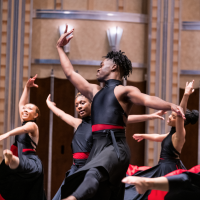In Atlanta this week, I am attending the annual conference of Grantmakers in the Arts, a professional association for my very specialized field. About 300 arts staff from family, private, corporate and community foundations and public funding agencies are here, and at the mid-point of the conference I am already filled with information I struggle to digest. Here are a few things that have struck me so far.
From a conversation here, five reasons to consider implementing a project via a fiscal sponsorship:
- Non-duplication of effort and expense – the sponsor uses its administrative structure so the project does not have to create it for itself
- Testing an idea that may or may not prove to be worthy of creating a new nonprofit organization
- One-time projects responding to opportunities or challenges that may not or will not come again
- The chance to move quickly when a worthy group’s nonprofit determination has not yet come through
- For a multi-funder project or broad collaboration.
Two best practices for fiscal sponsor/agent-funded projects:
- The sponsor must have strictly separate fund accounting for the sponsored project.
- The sponsor’s mission must be compatible with the sponsored project.
In a session trying to define clearly the “creative economy” sector, the New England Foundation on the Arts (NEFA) presented an exhaustive study that attempts to measure the cultural workforce and define the universe of cultural enterprises using standard and widely available U.S. data sources (U.S. census, Department of Labor classifications, etc.)
NEFA’s study is a very good starting point, but there is much work still to do, perhaps even at the public policy level. For example, while there are hundreds of job occupations identified by the U.S. Department of Labor, “arts administrator” is not among them. But a Las Vegas croupier is considered a “cultural worker” by virtue of her/his connection to the entertainment industry. Somebody has lots of ‘splainin’ to do before the real shape and depth of the cultural workforce gets catalogued and counted in a way that lets us be seen as a definable and influential sector.
Finally, as always at GIA conferences, there are many, many inspirational contributions by artists. Pakistani-born, American-raised educator, designer, artist and author Samina Quaraeshi said, “There is a cultural emergency in the world.” This thought was brought home in a session on international cultural exchanges during which a presenter stated, “This is a time when America needs to know the world.”
In his plenary luncheon speech, actor, theater/film/opera director Kenny Leon said, “People are life, theater is art, television is furniture.”
And in talking about the value of live theater, he said, “We need to sit in the dark as a people and search for the light.”
In relation to the singular and too-narrow focus on the economic impact of the arts that seems to be the beginning and end of all conversations about the value of the arts, Mr. Leon said several things I found worth trying to remember:
“The economic impact of the arts is huge. But the impact of the arts on human civilization and contemporary society is priceless.”
“Creative thinking and expression is worth more than gold.”
And finally, addressing the need for artists to make a living: “A painter needs to be able to paint her canvasses and her house.”


